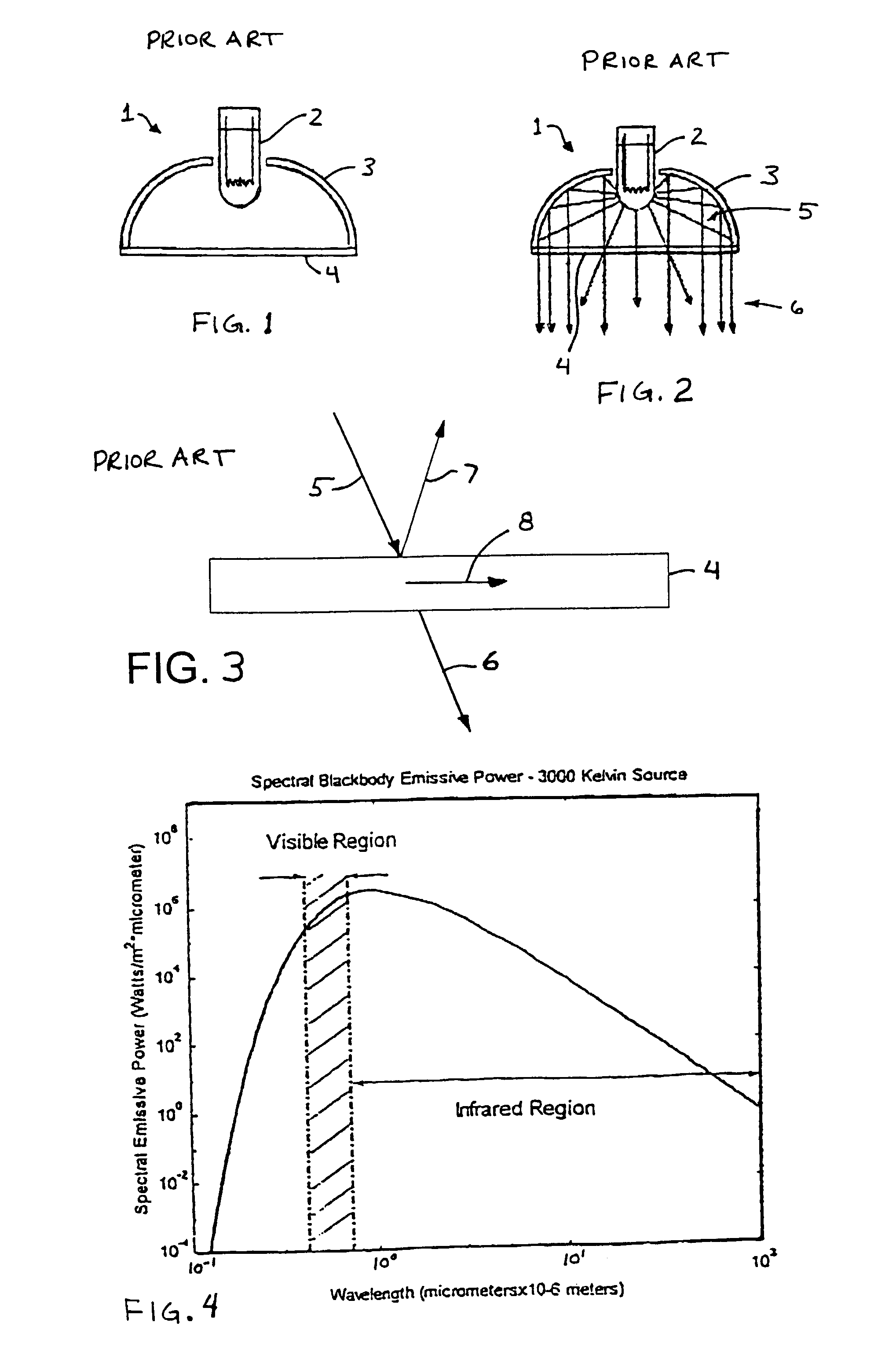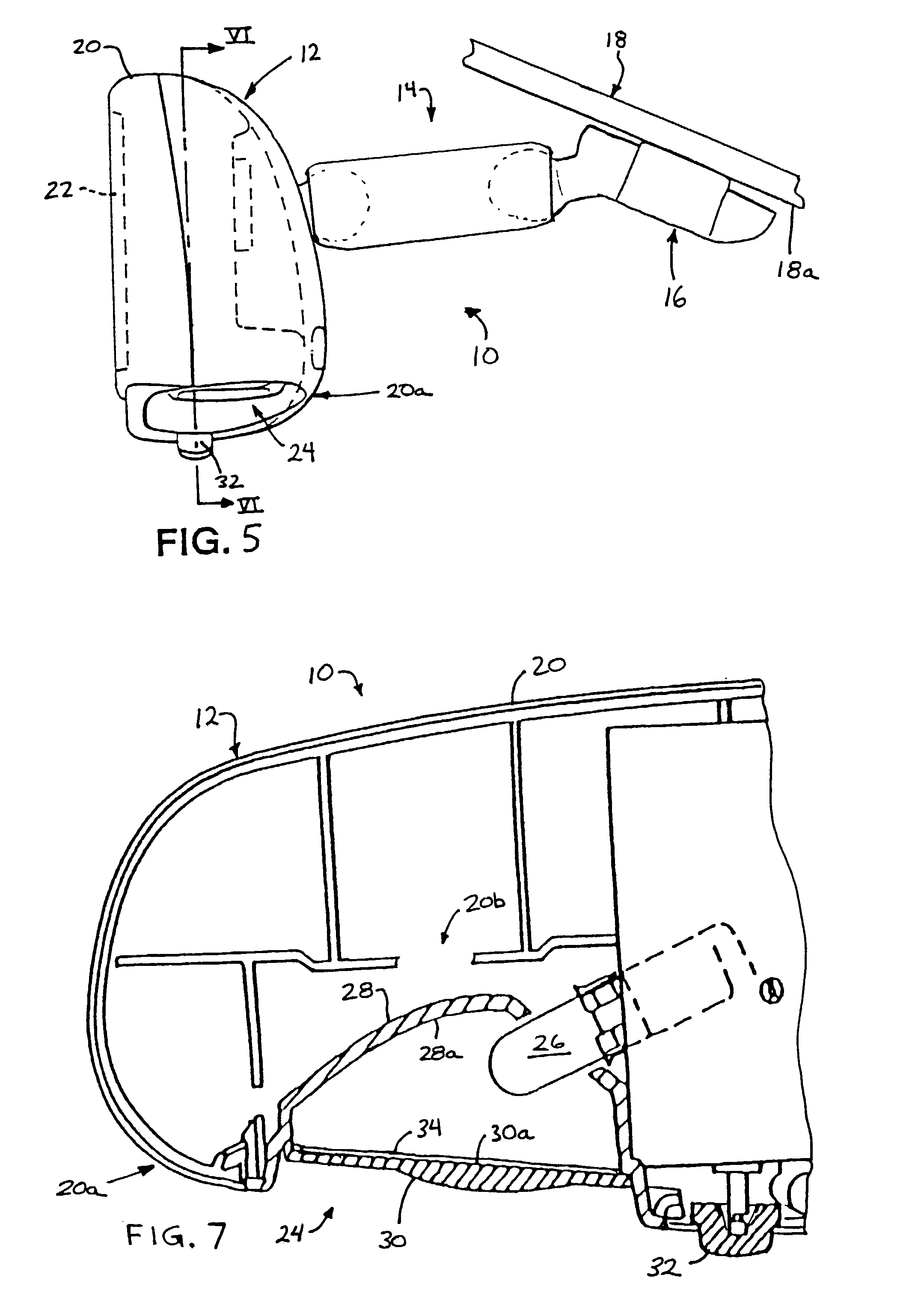Automotive lighting assembly with decreased operating temperature
a technology for automotive lighting and operating temperature, which is applied in the direction of fixed installation, lighting and heating apparatus, instruments, etc., can solve the problems of increased lens temperature, unwanted effect, increased heating of lamp or lighting unit lens members, etc., and achieves the effect of reducing the amount of infrared radiation and operating temperatur
- Summary
- Abstract
- Description
- Claims
- Application Information
AI Technical Summary
Benefits of technology
Problems solved by technology
Method used
Image
Examples
Embodiment Construction
[0029]While this invention is susceptible of embodiments in many different forms, there is shown in the drawings and will herein be described in detail, several specific embodiments with the understanding that the present disclosure is to be considered as an exemplification of the principles of the invention and is not intended to limit the invention to the embodiments illustrated.
[0030]Referring now to the drawings and the illustrative embodiments depicted therein, an interior rearview mirror assembly 10 includes a mirror body 12, a mounting arm 14 and a mirror mount 16 (FIG. 5). Mirror mount 16 is mountable to any mounting means suitable for mounting the mirror assembly to the vehicle, such as to a conventional mounting button (not shown) on an interior surface 18a of a windshield 18 of the vehicle or the like. In the illustrated embodiment, mirror mount 16, mounting arm 14 and mirror body 12 provide a double ball or double pivot mounting arrangement which allows the mirror body 1...
PUM
| Property | Measurement | Unit |
|---|---|---|
| wavelength range | aaaaa | aaaaa |
| temperature | aaaaa | aaaaa |
| infrared wavelengths | aaaaa | aaaaa |
Abstract
Description
Claims
Application Information
 Login to View More
Login to View More - R&D
- Intellectual Property
- Life Sciences
- Materials
- Tech Scout
- Unparalleled Data Quality
- Higher Quality Content
- 60% Fewer Hallucinations
Browse by: Latest US Patents, China's latest patents, Technical Efficacy Thesaurus, Application Domain, Technology Topic, Popular Technical Reports.
© 2025 PatSnap. All rights reserved.Legal|Privacy policy|Modern Slavery Act Transparency Statement|Sitemap|About US| Contact US: help@patsnap.com



